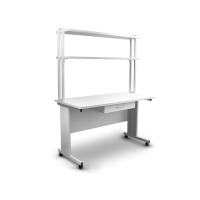Sterilizing
Sterilization is a term referring to any process that eliminates all forms of life and other biological agents, including transmissible agents present in a specified region, such as a surface, a volume of fluid or in a compound such as biological culture media.
- Sterilization by Moist Heat: Moist heat acts by denaturation and coagulation of protein, breakage of DNA strands, and loss of functional integrity of cell membrane. Moist heat is the most dependable method of sterilization. Autoclaving is the most convenient method of rapidly achieving destruction of all forms of microbial life. Autoclaves use saturated steam under pressure of approximately 15 pounds per square inch to achieve a chamber temperature of at least 250°F (121°C) for a prescribed time.
- Sterilization by Dry Heat: Hot Air Oven (Sterilizer). It Is one of the most common method used for sterilization. Glass wares, swab sticks, all-glass syringes, powder and oily substances are sterilized in hot air oven. For sterilization, a temperature of 160°C is maintained (holding) for one hour. Spores are killed at this temperature leading to sterilization.
Refine Search
UV cabinet/PCR workstation economy, dual UV protection lamp
UV cabinet/PCR workstation economy, glass front, dual UV protection lamp and UV recirculator, intlet..
UV cabinet/PCR workstation economy, dual UV protection lamp
UV cabinet/PCR workstation economy, glass front, dual UV protection lamp and UV recirculator, int. p..
UV cabinet/PCR workstation, double SS work surface, UV recirculator
UV cabinet/PCR workstation, double, s. steel work surface, glass sides & front, dual UV pr..
UV cabinet/PCR workstation, SS work surface, UV recirculator
UV cabinet/PCR workstation, s. steel work surface, glass sides & front, dual UV protection lamp ..
UV cabinet/PCR workstation, SS work surface, UV recirculator
UV cabinet/PCR workstation, s. steel work surface, glass sides & front, dual UV protection lamp ..
T-4, Table for UVC/T-AR, UVC/T-M-AR, UVT-B-AR
Biosan T-4, Table for UVC/T-AR, UVC/T-M-AR, UVT-B-ARNew modular design of laboratory furniture ..
T-4L, Table for UVT-S-AR
Biosan T-4L, Table for UVT-S-ARNew modular design of laboratory furniture provides flexibility ..
Showing 1 to 9 of 9 (1 Pages)





